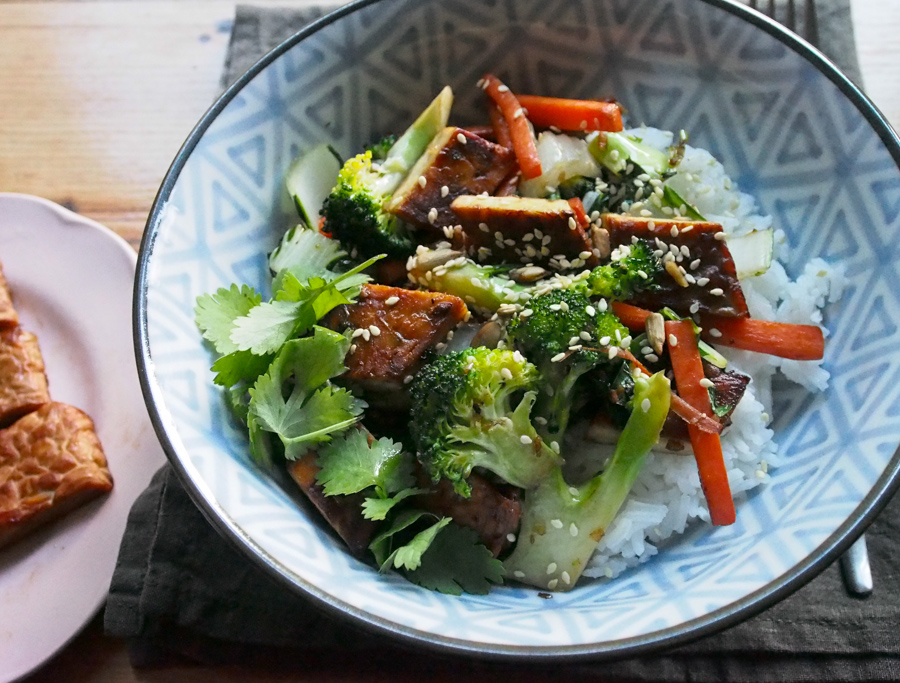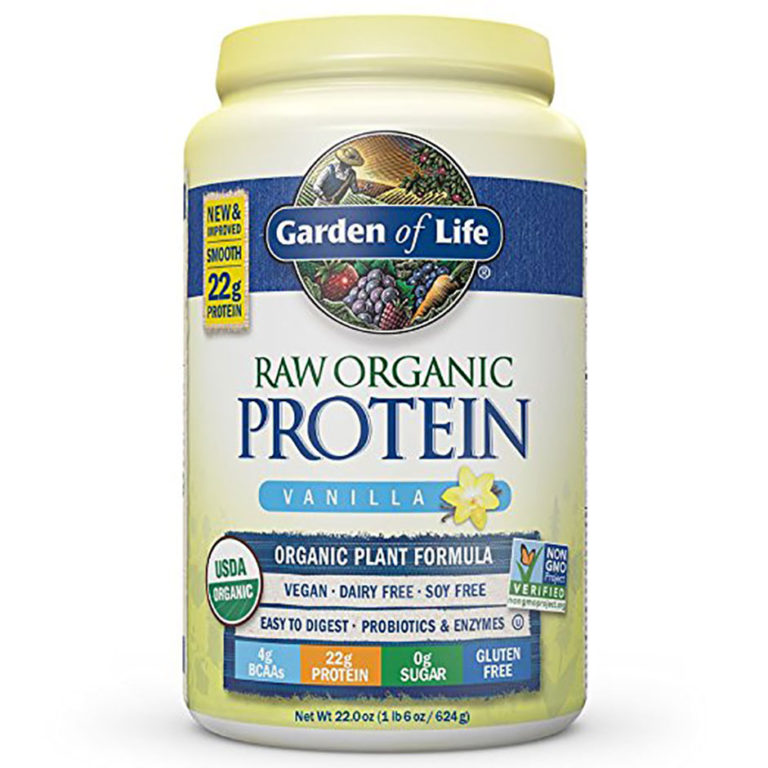Tempeh stir-fry: the very words conjure images of vibrant colors, tantalizing aromas, and a symphony of flavors dancing on your tongue. This isn’t just a meal; it’s a culinary journey across diverse cultures, a testament to the versatility of this humble fermented soybean cake. Prepare to be amazed by the endless possibilities – from the fiery kick of a Thai-inspired stir-fry to the comforting warmth of a coconut-based Indonesian delight.
We’ll explore the secrets to achieving perfectly textured tempeh, the art of crafting irresistible sauces, and the joy of creating a visually stunning masterpiece on your plate. Get ready to stir up some serious deliciousness!
This guide dives deep into the world of tempeh stir-fries, offering a wealth of recipes, techniques, and tips to elevate your cooking game. Whether you’re a seasoned chef or a kitchen novice, you’ll find something to inspire and delight you. We’ll cover everything from mastering the art of tempeh preparation to selecting the perfect vegetables and creating mouthwatering sauces that will leave you wanting more.
Get ready to unleash your inner culinary artist!
Tempeh Stir-Fry: A Culinary Adventure
Tempeh, the fermented soybean wonder, is far more versatile than its humble appearance suggests. Forget bland tofu; tempeh brings a nutty, earthy depth to any dish, especially a vibrant stir-fry. Prepare yourself for a whirlwind tour of flavor, texture, and culinary creativity as we delve into the exciting world of tempeh stir-fries!
Tempeh Stir-Fry Variations: A Global Gastronomic Journey
Five unique tempeh stir-fry recipes, each inspired by a different global cuisine, showcase tempeh’s adaptability. These recipes demonstrate how simple ingredient swaps can transform a dish from a subtle Indonesian delight to a fiery Korean masterpiece.
- Indonesian Tempeh Stir-Fry: Ingredients: Tempeh (cubed), kangkung (water spinach), long beans, shallots, garlic, chilies, kecap manis (sweet soy sauce), shrimp paste (optional), vegetable oil. Preparation: Sauté shallots, garlic, and chilies. Add tempeh and stir-fry until browned. Add kangkung and long beans, stir-frying until tender-crisp. Stir in kecap manis and shrimp paste (if using).
Serve with rice.
- Thai Green Curry Tempeh Stir-Fry: Ingredients: Tempeh (cubed), green curry paste, coconut milk, bamboo shoots, bell peppers, zucchini, kaffir lime leaves, fish sauce (or soy sauce for vegan), vegetable oil. Preparation: Sauté green curry paste in oil. Add tempeh and stir-fry until lightly browned. Pour in coconut milk and add vegetables. Simmer until vegetables are tender.
Stir in fish sauce (or soy sauce) and kaffir lime leaves. Serve with jasmine rice.
- Chinese Garlic Ginger Tempeh Stir-Fry: Ingredients: Tempeh (cubed), broccoli florets, carrots (sliced), garlic (minced), ginger (minced), soy sauce, oyster sauce (or mushroom sauce for vegan), sesame oil, cornstarch slurry (for thickening), vegetable oil. Preparation: Stir-fry garlic and ginger in oil. Add tempeh and stir-fry until golden. Add broccoli and carrots, stir-frying until tender-crisp. Stir in soy sauce, oyster sauce (or mushroom sauce), and sesame oil.
Thicken with cornstarch slurry. Serve with rice noodles.
- Korean Spicy Tempeh Stir-Fry: Ingredients: Tempeh (cubed), gochujang (Korean chili paste), gochugaru (Korean chili flakes), soy sauce, sesame oil, garlic (minced), ginger (minced), spinach, mushrooms, onions, vegetable oil. Preparation: Mix gochujang, gochugaru, soy sauce, sesame oil, garlic, and ginger. Marinate tempeh in the mixture for at least 30 minutes. Stir-fry marinated tempeh until browned. Add spinach, mushrooms, and onions.
Stir-fry until vegetables are wilted. Serve with rice.
- Vietnamese Lemongrass Tempeh Stir-Fry: Ingredients: Tempeh (cubed), lemongrass (finely chopped), fish sauce (or soy sauce), brown sugar, garlic (minced), shallots (minced), carrots (julienned), bell peppers (sliced), bean sprouts, vegetable oil. Preparation: Sauté lemongrass, garlic, and shallots in oil. Add tempeh and stir-fry until browned. Add carrots and bell peppers. Stir in fish sauce (or soy sauce) and brown sugar.
Toss in bean sprouts at the end. Serve with rice vermicelli noodles.
| Recipe | Key Ingredients | Cooking Method | Flavor Profile |
|---|---|---|---|
| Indonesian | Kecap Manis, Shrimp Paste, Kangkung | Stir-fry | Savory, Sweet, Umami |
| Thai Green Curry | Green Curry Paste, Coconut Milk | Simmer | Spicy, Creamy, Aromatic |
| Chinese Garlic Ginger | Garlic, Ginger, Soy Sauce | Stir-fry | Savory, Umami, Slightly Sweet |
| Korean Spicy | Gochujang, Gochugaru | Stir-fry | Spicy, Savory, Sweet |
| Vietnamese Lemongrass | Lemongrass, Fish Sauce, Brown Sugar | Stir-fry | Savory, Sweet, Tangy |
The nutritional benefits of tempeh, a complete protein source, are enhanced by the addition of diverse vegetables and flavorful sauces. For example, the Indonesian version provides fiber from kangkung, while the Thai green curry offers vitamins from bell peppers and zucchini. The Korean stir-fry’s spinach contributes iron, and the Chinese version provides vitamin C from broccoli.
Cooking Methods for Tempeh: Texture Triumphs
Three distinct methods optimize tempeh’s texture and flavor before stir-frying. Each method results in a unique mouthfeel and subtly alters the tempeh’s interaction with the stir-fry sauce.
- Pan-frying: Achieves a crispy exterior and slightly chewy interior. The tempeh develops a rich brown color and a satisfying crunch. Cooking time is relatively short, around 5-7 minutes per side.
- Baking: Yields a uniformly cooked, slightly drier tempeh with a softer texture. Baking produces a mild nutty flavor, and the tempeh retains its shape well. Baking takes approximately 20-25 minutes at 375°F (190°C).
- Steaming: Results in a moist, tender tempeh with a subtle flavor. Steaming maintains the tempeh’s natural color and texture, making it ideal for stir-fries where a softer tempeh is preferred. Steaming takes around 15-20 minutes.
Sauce Development: Flavor Foundations
Three distinct sauce recipes, each with a unique base, showcase the versatility of tempeh stir-fry sauces. The choice of base profoundly impacts the overall flavor profile and ideal vegetable pairings.
- Peanut Butter Sauce: Creamy, nutty, and slightly sweet. Pairs well with broccoli, carrots, and bell peppers.
- Soy Sauce Based Sauce: Savory, umami-rich, and versatile. Complements a wide range of vegetables, including mushrooms, spinach, and bok choy.
- Coconut Milk Based Sauce: Creamy, slightly sweet, and fragrant. Ideal for stir-fries with bamboo shoots, bell peppers, and zucchini.
Thickening agents like cornstarch or arrowroot powder control the sauce’s consistency. Cornstarch provides a slightly glossy finish, while arrowroot powder creates a clearer, less opaque sauce.
Discover the crucial elements that make healthy vegan snacks the top choice.
Vegetable Selection and Preparation: A Symphony of Textures
Five vegetables, chosen for their complementary flavors and textures with tempeh, enhance the stir-fry’s appeal. Careful preparation techniques further optimize their texture and presentation.
- Broccoli: Its firm texture holds up well during stir-frying, and its slightly bitter flavor balances tempeh’s nuttiness.
- Carrots: Their sweetness complements tempeh’s earthiness, and their crispness provides textural contrast.
- Bell Peppers: Their vibrant colors and mild flavor add visual appeal and a touch of sweetness.
- Mushrooms: Their earthy flavor enhances tempeh’s umami notes, and their varying textures (shiitake vs. button) add interest.
- Snap Peas: Their delicate sweetness and vibrant green color add a refreshing element.
Slicing, dicing, and julienning vegetables affect cooking time and presentation. Thinly sliced vegetables cook faster, while larger pieces retain more texture. Julienned vegetables offer a visually appealing contrast.
Serving Suggestions and Variations: Culinary Customization, Tempeh stir-fry

Three visually appealing plating styles and serving suggestions expand the tempeh stir-fry’s versatility, accommodating diverse preferences.
- Plating Style 1: Mound the stir-fry in the center of the plate, garnished with fresh herbs and a drizzle of sauce.
- Plating Style 2: Arrange the stir-fry in a semicircle, with a scoop of rice or noodles alongside.
- Plating Style 3: Serve the stir-fry in a shallow bowl, garnished with toasted sesame seeds and chopped peanuts.
Serve with rice, noodles, or use as a filling for wraps or lettuce cups. Adapt recipes to dietary needs by using gluten-free soy sauce, omitting fish sauce for vegan options, or choosing low-carb vegetables.
So there you have it – a whirlwind tour through the exciting world of tempeh stir-fry! From the crispy-edged perfection of pan-fried tempeh to the silky smooth embrace of a coconut milk-based sauce, we’ve explored the many facets of this incredibly versatile dish. Remember, the beauty of stir-frying lies in its adaptability. Don’t be afraid to experiment, to substitute ingredients, and to create your own unique culinary masterpiece.
So grab your wok, gather your ingredients, and get ready to embark on a delicious adventure. Happy cooking!
Question Bank
Can I use pre-cooked tempeh?
Absolutely! Pre-cooked tempeh cuts down on prep time. Just ensure it’s properly drained and lightly pan-fried to crisp it up before adding it to the stir-fry.
How do I store leftover tempeh stir-fry?
Store leftovers in an airtight container in the refrigerator for up to 3 days. Reheat gently in a pan or microwave.
Can I freeze tempeh stir-fry?
Yes, but the texture might slightly change upon thawing. Freeze in portions for easy reheating.
What are some good substitutes for tempeh?
Tofu, seitan, or even chickpeas can be used as substitutes, but the flavor and texture will differ.





